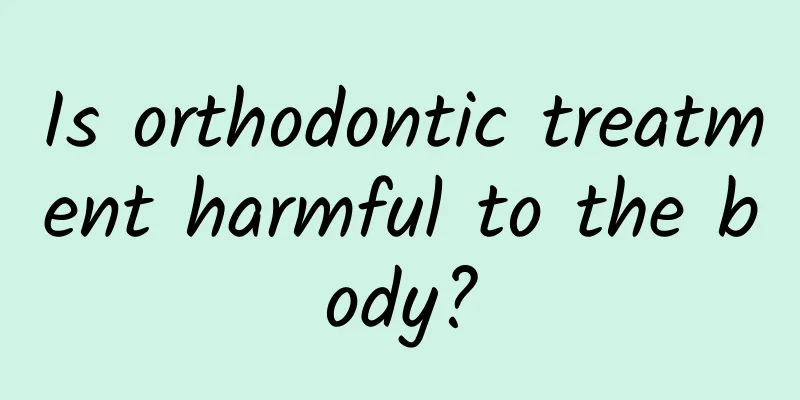Is orthodontic treatment harmful to the body?

|
As people's living standards improve, they pay more and more attention to the health and beauty of their teeth. Therefore, in recent years, more and more people have undergone orthodontic treatments, which can improve people's chewing habits and avoid the occurrence of dental diseases. Of course, improper tooth correction can also cause certain harms. For example, it may affect the height of the alveolar bone. Improper correction can cause loose teeth and cause great harm to the dental pulp. Therefore, orthodontic treatment must be performed in a regular hospital. The dangers of orthodontic treatment 1. Orthodontic treatment will affect the height of the alveolar bone. For those who have undergone orthodontic treatment, the height of the alveolar bone will decrease slightly. This is mainly because wearing braces makes it difficult to maintain oral hygiene, which increases the chance of developing gingivitis, thus affecting the alveolar bone. Generally, after orthodontic treatment, the alveolar bone will no longer continue to be absorbed. If good oral hygiene can be maintained at this time, the alveolar bone will gradually return to normal. 2. Straightening teeth will affect the pulp. In the early stages of orthodontic treatment, a mild, temporary inflammatory reaction occurs in the dental pulp, and the patient will experience noticeable pain and loss of sensation, but the impact is not a big problem. 3. Orthodontic treatment will affect tooth mobility. Generally speaking, each tooth has a certain physiological mobility in order to buffer the pressure of chewing and prevent tooth trauma. However, when correcting teeth, the teeth need to move, which requires reconstruction of the alveolar bone and periodontal membrane. Because the teeth are fixed in the alveolar bone by the periodontal membrane, the teeth will become loose. Therefore, it is normal for teeth to become more loose after treatment. When the teeth are corrected to their normal position and stop moving, the periodontal membrane will reattach and become stable through its own repair ability, and no permanent damage will occur. However, during treatment, if the teeth are too loose, the force should be stopped and allowed to recover for a while before continuing to apply force. In addition to the main hazards mentioned above, orthodontic treatment may also cause the following situations, such as tooth extraction and slurred speech, which mainly occur after wearing dental braces. Toothache may also occur within a short period of time. The process of dental braces breaking-in is quite painful, and may cause soft tissue contusion symptoms such as bleeding, soreness, scratches, and ulcers. Some people's face shape may change after orthodontic treatment, which is also worth noting. |
<<: How to correct overbite in adults
>>: Is tooth powder harmful to teeth?
Recommend
Where to moxibustion for knee pain
Nowadays, people pay more and more attention to t...
Can I use Chinese medicine residue to soak my feet?
Soaking your feet every day is not only good for ...
Causes of convulsions
Convulsions, also known as cramps in daily life, ...
Tattoos to cover scars
Although medical technology is becoming more and ...
What Chinese medicine is effective for treating fever in the five senses?
Five Hearts and Minds Heat is a professional term...
What to do if an adult has a fever
Fever is a common disease and it is not seasonal,...
What are the ways to prevent headaches among white-collar workers?
Today's white-collar workers are under tremen...
How to treat neurological tinnitus? Massage treatment of tinnitus
Neurological tinnitus is a common ear disease. Wh...
Can I get pregnant after having a vasectomy?
Sterilization is a surgery performed to avoid pre...
Will thrush get better without treatment?
Many newborn babies suffer from symptoms of thrus...
How to eliminate inflammation in the body?
The internal health of the body is very easily af...
The efficacy and function of glutinous rice root
The Chinese medicinal material glutinous rice roo...
What is vitamin C? Avoid taking it with these foods
Vitamin C is a trace element, and its benefits to...
Mole surgery may lead to malignant transformation
When there is a mole on the skin, many people wil...
What is the correct way to nourish the kidneys?
Many people are now discussing the issue of kidne...









